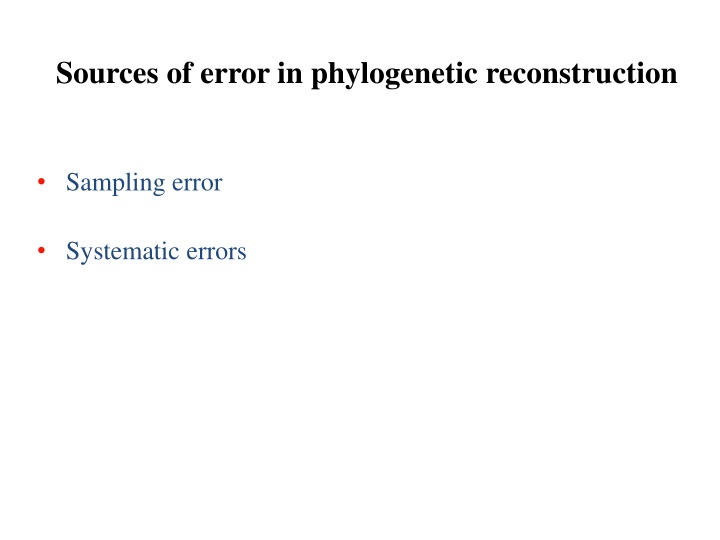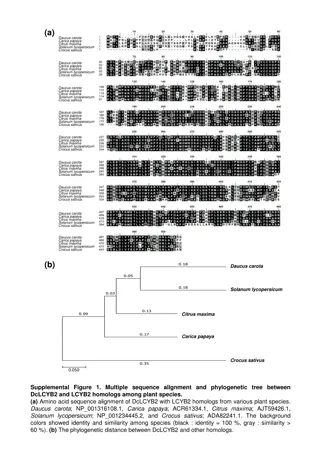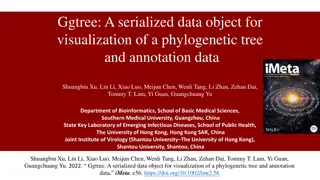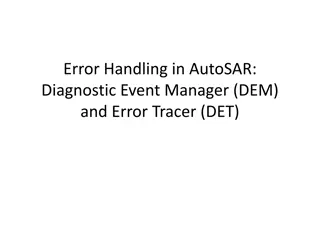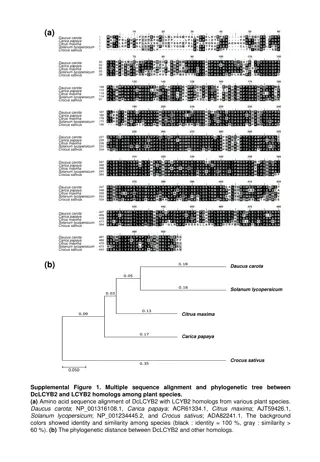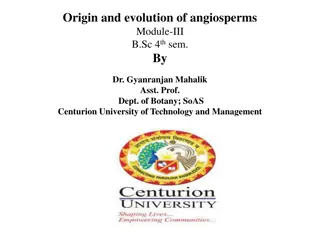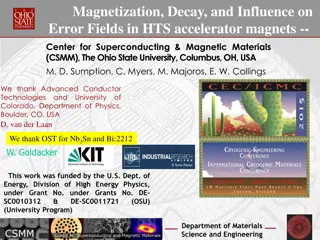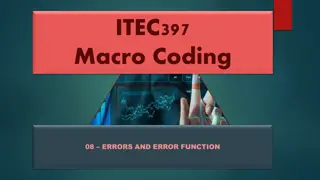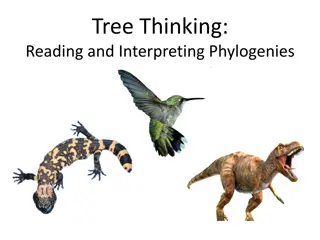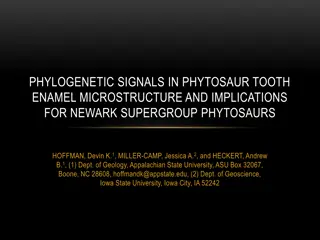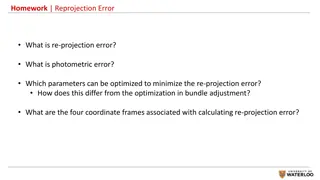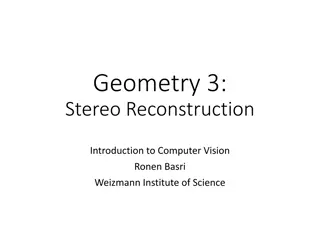Sources of error in phylogenetic reconstruction
The content discusses sources of error in phylogenetic reconstruction, including sampling errors and systematic errors. It covers topics like stochastic errors, modeling inaccuracies, and assumptions in basic evolutionary models. Illustrative images and explanations shed light on issues such as long-branch attraction and heterotachy. The importance of evaluating assumptions in phylogenetic models is emphasized to ensure accurate evolutionary insights.
Download Presentation

Please find below an Image/Link to download the presentation.
The content on the website is provided AS IS for your information and personal use only. It may not be sold, licensed, or shared on other websites without obtaining consent from the author.If you encounter any issues during the download, it is possible that the publisher has removed the file from their server.
You are allowed to download the files provided on this website for personal or commercial use, subject to the condition that they are used lawfully. All files are the property of their respective owners.
The content on the website is provided AS IS for your information and personal use only. It may not be sold, licensed, or shared on other websites without obtaining consent from the author.
E N D
Presentation Transcript
Sources of error in phylogenetic reconstruction Sampling error Systematic errors
Sampling errors Stochastic errors Often being a problem with small sampling sizes e.g. standard error of estimation of population mean decreases with sampling size se = sd n
Systematic errors Systematic caused by incorrect modeling. Lead to inconsistency, which means that more data will converge to the wrong answer. Usually resulted from under- parameterized models.
An Illustration of the General Properties of Model Selection (Pybus OG ,2006) (A) A hypothetical dataset consisting of thirteen points plotted on two axes. (B) A simple model, represented by a straight line through the points. (C) A very complex model, which fits the data almost perfectly but has too many parameters. (D) A model with an intermediate number of parameters represented by a curve. This fits the data well but still has relatively few parameters and therefore has greater explanatory power.
Systematic errors: analytical factor Long-branch attraction Non-stationarity Among site rate variation Heterotachy etc.
Basic evolutionary models Topology and branch length Taxa 1 Taxa 2 Taxa 3 Taxa 4 Taxa 5 rTC (= rCT), rTA (= rAT), rTG (= rGT) rCA (= rAC), rCG (= rGC) rAG (= rGA) Substitution matrix fT, fC, fA, fG, Stationary base frequencies
Assumptions in basic models The evolution of characters follows a Markov model with Poisson distribution, but some evidence suggest the overdispersed point process fits the data better . Each site evolves independently and according to the identical process, so called i.i.d. process. Molecular clock assumption describes the evolutionary rate as constant along the evolutionary process.
i.i.d. assumption Each site evolves independently and according to the identical process, so called i.i.d. process.
Assumptions in basic models Q...... Are these assumptions reasonable?
INDEPENDENCE? We assume that change at one site has no effect on other sites. Frequently violated. eg. Ribosomal RNA A substitution in a stem region can result in a pair of nucleotides that cannot Watson-Crick pair correctly, reducing stability of the structure. Often we find that single changes are accompanied by compensatory changes. Clearly violates the independence assumption. Weight differently for stem and loop sites
Identical or variation in rates of substitution among sites? All of the methods presented assume that each site in a sequence is equally likely to undergo substitution. If rates of substitution vary, can have considerable influence on sequence divergence (i.e. how much change we estimate to have occurred) Consider the case where some sites are free to vary while others are constrained to be invariant
If a large proportion of sites are not free to vary then paradoxically, sequences that evolve at a fast rate can appear to show less sequence divergence than more slowly evolving sequences that have fewer constraints. (A) rate of subst. 0.5%/Myr: 80% of sites free to vary (B) rate of subst. 2%/Myr: 50% of sites free to vary
In reality sites show a range of probabilities of distribution of rates Challenge is to develop a tractable model of the rate variation Most widely used approach uses the gamma distribution Gamma distrib has a shape parameter that specifies range of rate variation among sites small values of result in L-shaped distrib. larger values smaller range of rates. when > 1 distribution is bell shaped
Estimates of alpha vary from nuclear and mitochondrial genes vary between 0.16 (12sRNA) - 1.37 (prolactin) note. Values of from first & 2nd codon positions tend to be smaller than those from 3rd codon positions
Can modify models of evolutionary change to include the gamma distribution - typically represented by the symbol HKY +
Base Composition Equilibrium? Assumes that base composition is roughly the same over the collection of sequences. Deviations from this assumption occur commonly and often lead to misleading inferences. When constructing trees there is a tendency to cluster sequences together that have similar base compositional profiles. Explicitly modeling the non-stationary process
Compositional bias (non-stationary) Compositional bias can result in the artefactual grouping of species with similar nucleotide composition, because most methods assume the homogeneity of the substitution process and the constancy of sequence composition (stationarity) through time (Delsuc et al. 2005). D A B C 50% 50% 70% 70% D A B C 50% 50% 50% 70% 70%
Long branch attraction A C A C Intuitively, with long branches leading to speices A and C, the probability of parallel changes that arrive at the same state becomes greater than the probability of an informative single change in the interior branch of the tree (Felsenstein, 2004). B D B D
